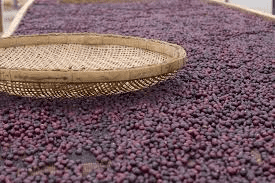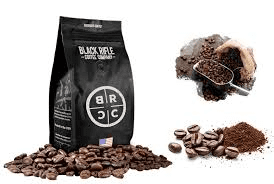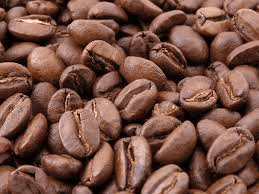Processing, packaging, and exporting coffee is a crucial journey that transforms raw coffee beans into a product ready for global markets. This process starts with harvesting the coffee cherries, which are the fruit that contains the coffee beans. Once harvested, the cherries must be processed to remove the outer layers and reveal the beans inside.
There are two main methods for processing coffee: dry and wet. In the dry method, the cherries are spread out in the sun to dry, and then the dried cherries are hulled to remove the outer layers. The wet method involves pulping the cherries to remove the outer skin, fermenting the beans to develop flavor, and then drying them. After processing, the beans are sorted and graded based on size, weight, and quality.
Next, the processed beans need to be packaged. Packaging is essential to preserve the coffee’s freshness and flavor during transportation. Coffee is usually packaged in airtight bags or containers to protect it from moisture, light, and air. The packaging also includes important information such as the coffee’s origin, roast date, and brewing instructions. This information helps consumers understand what they are buying and how to get the best flavor from their coffee.
Exporting coffee involves transporting the packaged coffee to international markets. This step requires careful planning to ensure that the coffee reaches its destination in good condition. Exporting involves complying with various regulations and standards, including those related to quality and safety. Coffee exporters must work with shipping companies to arrange for transportation and ensure that the coffee is properly labeled and documented for customs.
Processing, packaging, and exporting coffee are interconnected steps that play a vital role in delivering high-quality coffee to consumers around the world. Each stage requires attention to detail and adherence to best practices to ensure that the coffee maintains its quality and flavor from the farm to the consumer’s cup.
How to Process Coffee for Exportation

1. Harvesting: Coffee beans are harvested when they are fully ripe, typically once they have turned a deep red color. The timing of the harvest is crucial as it affects the flavor and quality of the beans. Use selective picking to ensure only ripe beans are collected.
2. Processing: After harvesting, coffee beans need to be processed to remove the outer layers. The two main methods are the dry process (where beans are dried with the fruit still attached) and the wet process (where beans are fermented and washed to remove the fruit). Choose the method based on the desired flavor profile and quality.
3. Drying: Dry the beans thoroughly to reduce their moisture content to about 12%. This can be done by spreading the beans out in the sun or using mechanical dryers. Proper drying is essential to prevent mold growth and ensure a longer shelf life.
4. Hulling: After drying, remove the parchment layer from the beans (in the wet process) or the outer fruit layer (in the dry process). This is done using a hulling machine or manually if the scale is small. This step prepares the beans for further cleaning and grading.
5. Sorting: Sort the beans to remove any defects or impurities. Beans are usually sorted by size and weight using mechanical sorters. Manual sorting can also be used to ensure that only high-quality beans are selected.
6. Grading: Grade the beans based on quality, size, and defects. Different grades are used for different markets, with higher grades generally fetching higher prices. Proper grading ensures that the beans meet the quality standards required by buyers.
7. Bagging: Once sorted and graded, bag the coffee beans in burlap or jute sacks. Ensure the bags are clean and free from contaminants to maintain the quality of the beans during transit.
8. Labeling: Label each bag with essential information including the grade, origin, and date of processing. This helps buyers identify the coffee and ensures traceability throughout the supply chain.
9. Storage: Store the coffee beans in a cool, dry place until they are ready for export. Proper storage conditions help maintain the quality and flavor of the beans and prevent deterioration.
10. Documentation: Prepare all necessary export documentation such as certificates of origin, phytosanitary certificates, and quality assurance certificates. This ensures compliance with international trade regulations and smooth customs clearance.
Read Also: How to Raise Ruminant Animals for Fattening and Reproduction together
How to Package Coffee for Exportation

1. Choose Packaging Materials: Select high-quality packaging materials that protect the coffee beans from moisture, light, and air. Common options include vacuum-sealed bags, foil-lined pouches, or heavy-duty plastic containers.
2. Measure Portions: Decide on portion sizes based on market requirements and customer preferences. Common sizes include 250g, 500g, or 1kg bags for retail or larger quantities for bulk buyers.
3. Seal Packages: Use appropriate sealing methods to ensure that packages are airtight and protect the coffee from contamination. For vacuum-sealed bags, use a vacuum sealer to remove air and maintain freshness.
4. Label Packages: Clearly label each package with essential information including product name, weight, origin, and roast date. Include any additional details required by the importing country, such as certifications or nutritional information.
5. Include Documentation: Place copies of required export documents inside the packages or attach them to the shipment. This includes certificates of origin, quality assurance certificates, and packing lists.
6. Inspect Packaging: Check that all packages are properly sealed, labeled, and free from defects. This helps prevent issues during customs inspection and ensures that the coffee reaches its destination in good condition.
7. Palletizing: For large shipments, arrange the packages on pallets. Ensure they are stacked evenly and secured with straps to prevent shifting during transport. This helps in handling and shipping efficiency.
8. Use Cushioning: If shipping in bulk or fragile containers, use cushioning materials such as bubble wrap or packing peanuts to protect the coffee from impact and damage.
9. Maintain Cleanliness: Ensure that the packaging area is clean and free from contaminants. This helps preserve the quality of the coffee and avoids cross-contamination.
10. Store Packages: Store the packaged coffee in a cool, dry place until it is ready for shipment. Avoid exposing it to direct sunlight or extreme temperatures to maintain quality.
How to Export Coffee for Profits
1. Market Research: Conduct thorough market research to identify potential markets and understand demand for coffee. Look for regions with high coffee consumption or emerging markets with growing demand.
2. Understand Regulations: Familiarize yourself with export regulations and requirements for the target market. This includes tariffs, import restrictions, and quality standards specific to coffee.
3. Find Buyers: Reach out to potential buyers or importers in your target market. Attend trade shows, join coffee associations, and use online platforms to connect with buyers.
4. Set Pricing: Determine competitive pricing based on market conditions, production costs, and profit margins. Consider factors like quality, grade, and packaging when setting prices.
5. Negotiate Terms: Negotiate terms with buyers including payment terms, delivery schedules, and contract conditions. Ensure both parties agree on these terms before finalizing the export deal.
6. Secure Logistics: Arrange for reliable logistics and transportation to ensure timely and safe delivery of your coffee. Choose experienced logistics providers who specialize in handling agricultural products.
7. Monitor Quality: Continuously monitor the quality of your coffee to meet export standards. Implement quality control measures throughout the processing and packaging stages to address any issues promptly.
8. Handle Documentation: Complete all required export documentation accurately and in compliance with international trade regulations. This includes preparing invoices, packing lists, and certificates of origin.
9. Promote Your Product: Invest in marketing and promotion to increase visibility and attract more buyers. Use online marketing, social media, and trade publications to reach a broader audience.
10. Evaluate and Adjust: Regularly review your export performance and customer feedback. Make adjustments to your strategy as needed to improve profitability and expand your market reach.
Read Also: Popular Breeds of Ruminant Animals
Frequently Asked Questions (FAQ’s) About Coffee

1. What is the difference between Arabica and Robusta coffee? Arabica coffee is known for its smooth, complex flavors and is typically grown at higher altitudes. Robusta coffee has a stronger, more bitter flavor and is often grown at lower altitudes. Arabica is generally considered higher quality.
2. How should coffee beans be stored? Coffee beans should be stored in an airtight container in a cool, dark place to maintain freshness. Avoid storing them in the refrigerator or freezer as this can affect flavor.
3. How can I tell if coffee is fresh? Fresh coffee beans should have a strong, rich aroma and a shiny surface due to the natural oils. Stale coffee will have a dull aroma and lack of shine.
4. What is coffee cupping? Coffee cupping is a process used to evaluate the flavor, aroma, and quality of coffee beans. It involves smelling and tasting brewed coffee to assess its characteristics.
5. Can coffee beans be ground in advance? While coffee beans can be ground in advance, it is best to grind them just before brewing to preserve their freshness and flavor.
6. What are coffee blends? Coffee blends are created by combining beans from different origins or roast profiles to achieve a desired flavor profile. Blends can balance flavors and create unique tastes.
7. What is fair trade coffee? Fair trade coffee is produced under standards that ensure fair wages and working conditions for farmers. It aims to promote ethical and sustainable practices in coffee production.
8. How do I brew coffee? Brewing coffee involves grinding beans to the desired consistency, using the right water temperature, and choosing a brewing method such as drip, French press, or espresso.
9. What are coffee roasts? Coffee roasts refer to the level of roasting applied to the beans, ranging from light to dark. Light roasts have a more acidic flavor, while dark roasts have a more robust, smoky taste.
10. How does altitude affect coffee flavor? Coffee grown at higher altitudes tends to have more complex and nuanced flavors due to slower maturation. Lower-altitude coffee can be more robust and less acidic.
Read Also: How to Make Your Own Organic Pesticides






